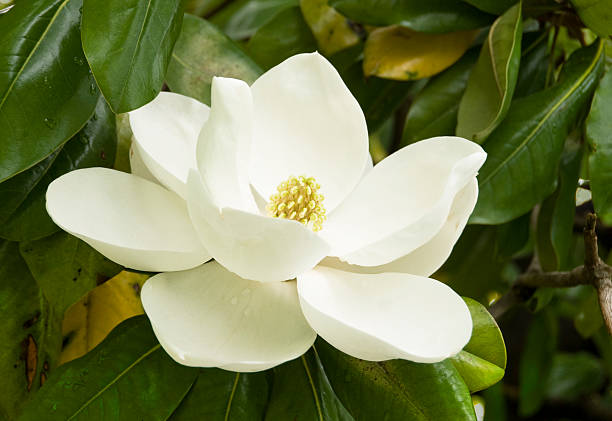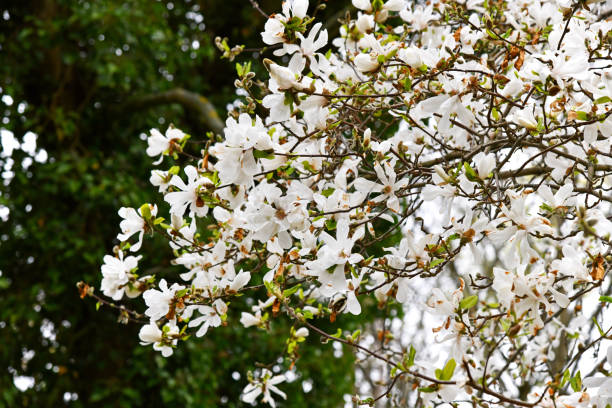When Should I Prune Magnolia Bush? The Best Time For Cutting Magnolia
Magnolia bushes are trendy ornamental plants frequently planted in gardens and public spaces. It is easy to understand why! Magnolia has a beautiful flower, which can be used as a wedding bouquet or centerpiece. However, you did plant an attractive Magnolia, but it grows leggy, and you didn’t know when is the right time to prune it. This article will provide you with some guidance on when and how to prune magnolia bushes. This article will also discuss the benefits of pruning magnolia and the effects of over-pruning.

Table of Contents
When is the Best Time to Prune Magnolias?
The goal of pruning and trimming your Magnolia is to remove dead branches and water shoots. So it’s a good idea to spread each pruning session out over a minimum of 2 to 3 years to achieve this goal. When pruning magnolia trees, the best time is in the late spring and summer. You can prune your Magnolia at any time of the year, and you won’t have to worry about attracting any disease-causing insects. You’ll also want to prune magnolia trees after they have finished flowering because otherwise, you run the risk of cutting off the beautiful flowers.
When you first plant your Magnolia Tree, it is a good idea to prune it to grow into the shape you desire. Weak limbs, small branches, and twirling branches on your Magnolia Tree can cause your plant to appear misshaped, so make sure you inspect it thoroughly. Keep an eye out for abnormally large branches that are significantly longer than the rest of the tree. Additionally, you must get rid of these! Remove any suckers, water shoots, or dead limbs from your plant because these can cause problems later on in the plant’s journey to becoming a healthy and aesthetically pleasing tree’s growth.

Trimming Evergreen Magnolia
Young evergreen magnolias should be pruned only in the late spring to early summer. If you want a bare stem, prune long, young branches and lower boughs away from the main stem. Summer pruning is required for some evergreen magnolias trained to a wall or other support structure.
Trimming Deciduous Magnolia
Young deciduous magnolias are rarely pruned, except for removing weak or damaged branches and long vertical shoots at the tree’s base. Pruning should be done on deciduous magnolias between the months of midsummer and early fall.
Pruning Magnolias
When Pruning a Magnolia, What to Look for?
Before pruning, you need to prepare the equipment you need. Here are a few things you’ll need:
- Pruning shears
- Pruning loppers
- Pruning saw
- Ladders
- Hard Hat
- Safety Goggles
- Safety Gloves
Pruning a Deciduous Magnolia
- Prune After Planting-Cut any weak or damaged branches, as well as any that interfere with the upward symmetry of the plant, with loppers or hand pruning shears when you are preparing the planting site. Trim the branches to a healthy side shoot. You can also cut in bud node at the height of about 1/4 inch, depending on the size.
- Remove Dead or Damaged Wood- It’s easier to tell dead limbs from healthy ones because deciduous trees are pruned in the middle of summer to the end of the fall. This means that dead limbs will have no leaves. These limbs can be cut off with a pruning saw. You can cut them all the way back to a fork. Broken branches should also be cut down. This time, cut them back to a fork, not just cut them off below the break.
- Prune for Shape-When pruning deciduous trees, it is best to do so between the middle of summer and the beginning of fall. Look for excessively long limbs, causing the symmetry of the spreading growth habit to be disrupted, as well as any branches that rub against one another. To cut the branches, use lopping shears (small branches) or a pruning saw (large branches) to cut the branches back to a natural fork in the branch. To reach the higher branches, you will need to use a ladder; make sure to wear a hard hat while working on the ladder. When removing large branches, start your cut about 6 inches out from the fork and make an undercut in the branch to loosen it. Cut about halfway through the branch. Then change the saw’s position and begin sawing from the top of the branch, offsetting the cut about 2 inches inward on the branch until the branch is completely cut through. As the downward cut gets closer to the bottom cut, the limb should neatly snap off without removing any bark from the tree’s trunk.
- Remove Suckers and Watersprouts-If you notice any small suckers or water sprouts on the ground, trunk, or larger branches of the tree that you can lop off with hand pruners, do so as soon as possible. Cut in the desired length.
Pruning an Evergreen Magnolia
- Planting Time is a Good Time to Prune-Lower branches should be removed as soon as possible after planting with pruning shears or loppers. Evergreen types are often tall, upright trees, and the goal is to encourage upward growth and a pyramidal shape in the tree’s structure. Branches that are excessively long should be shortened at the time of planting to establish a good shape from the beginning.
- How to Spot and Get Rid of Dead Wood-Because you usually prune an evergreen magnolia in the early spring, it may not be easy to tell which branches are dead, even though you may have noticed this the year before. A simple way to tell which branches are alive and dead is to scrape through the bark on the suspected limbs with a sharp knife. Find green material just below the bark if the branch is alive. If you find only gray or brown, the branch is likely dead.
- Prune for Shape-Evergreens should be pruned lightly in the early spring months. Pruning should be done at this time to keep the tree’s pyramidal shape. Branches should be pruned back to a natural fork in the tree. Prevent bark stripping on large branches by cutting first from the underside to approximately the halfway point, then shifting to the top side and cutting through the branch to join the bottom cut. You may want to remove most of the branch from the fork by pulling it outward about 6 inches or so from the fork. After the bulk of the branch has been removed, cut off the short stub flush with the fork to finish the job.
- Eliminate Watersprouts and Suckers-Remove any suckers that appear using a pair of pruning shears, which can be used on evergreen magnolias or deciduous ones.

What are the Benefits of Pruning Magnolias?
Magnolias are a popular landscape plant that can be pruned to improve their appearance and performance. Pruning magnolias can help to:
- Reduce the size of the tree, which will make it easier to handle.
- Improve air circulation, which will reduce the risk of fungal or other diseases.
- Increase light penetration, which will help the tree grow taller and produce more flowers and fruit.
- Remove dead or diseased branches, which will reduce the amount of shade the tree provides and allow new growth to take place underneath the canopy.
- They will look better and be more structurally sound.
- They will last longer because they will not become overgrown or diseased.
- Remove large branches blocking the light and air from reaching the smaller branches below them.
- Maintain a consistent shape and appearance throughout the year.
- Encourage to grow a more robust branch structure.
Effects of Overpruning
Over pruning your Magnolia Tree can cause unnecessary stress, and it may start to appear weak and leggy with a lack of leaves and flowers to show as a result. It is important not to prune this plant in the late winter or early spring because the sap fluid will ooze from the branches and stems at that time, attracting a variety of pests and insects to the plant.
